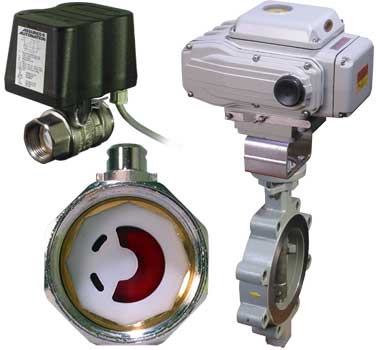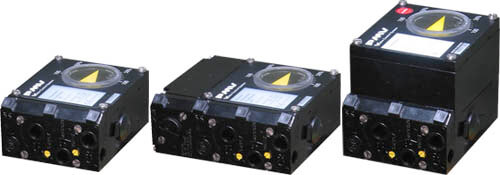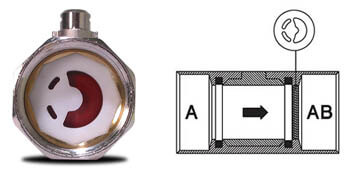| Order Online or Call Toll-Free 1-800-899-0553 | Log-in/Create Account |
Adds Thermal Shutdown to ANY spring
return pneumatic actuator!
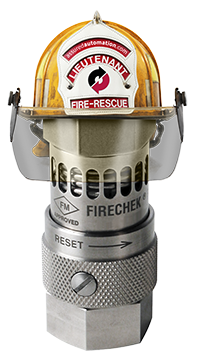 anAssured Automation
anAssured AutomationExclusive!
•Vents actuator to failsafe
•Closes air supply line
•Easy to test and reset
•No contact with process media
Pneumatic Actuators
Pneumatic Actuators
Ball&Butterfly Shut-Off Valves
Automated valve assemblies with
Emergency Shutdown Function included
with Fusible Links
Automatic Batch Controller
-How Many Gallons Do You Want?
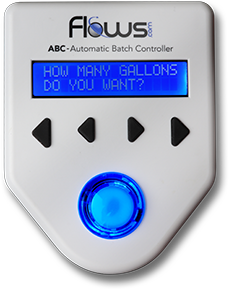
•Low-Cost
•Easy to Use
•Selection of Meters
•Selection of Valves

Seals:Viton,EPDM,or Buna
End Conn:Ni plated Brass(wetted)
Piston:Chem.Ni plated Brass(wetted)
Seat:PTFE 15%Glass FiberSeals:Viton,EPDM,or Buna
G(BSPP):3/8" to 2"
Seals:PTFE
Tri-Clamp:1/2" to 2"
Seals:EPDM or Viton
Seats:PTFE
Glue Socket:1/2" to 4"
Seals:PTFE
Seats:RPTFE
Socket Weld:1/2" to 3"
Tri-clamp:1/2" to 4"Ext.Tube Butt Weld:1/2" to 4"
Seals:PTFE
Seats:RPTFE
Socket Weld:1/4" to 3"
Tri-clamp:1/2" to 4"
Seals:TFM or Graphite
Seats:TFM or 50/50
300#:1/2" to 8"
Seals:TFM or Graphite
Seats:TFM or 50/50
300#:1/2" to 8"
Seals:TFM or Graphite
Seats:TFM or 50/50
Socket Weld:1/2" to 4"
Seals:TFM or Graphite
Seats:TFM or 50/50
Socket Weld:1/2" to 4"
Seals:TFM or Graphite
Seats:TFM or 50/50
Socket Weld:1/2" to 4"
Trim:API Trim 8(others available)
300#,600#,900#,1500#:Call
Seats:PTFE,TFM,or 50/50
Seats:PTFE,TFM,or 50/50
150#/300#:1/2" to 8"
Tri-Clamp:1/2" to 4"
Seats:PTFE
Seals:PTFE/Viton or RPTFE
Seats:TFM
Seals:TFM
300#:1 1/2" to 6"
Seats:PTFE
Seats:EPDM or Viton
Glue Socket:1/2" to 2"
Seats:EPDM,SIlicon,or Viton
Butt Weld:1/2" to 6"
Seats:Polypropylene
Lugged:2 1/2" to 12"
Seats:RPTFE
Lugged:2" to 12"
Seats:Graphite
Lugged:3" to 48"
ANSI class 150,300,600
Seats:Graphite
Lugged:3" to 48"
ANSI class 150,300,600
Seats:BUNA or EPDM
Lugged:2" to 24"
Seats:Viton
Lugged:2" to 24"
Plug:PFA Lined Ductile Iron
Seals:PTFE,RPTFE,PFA,or Special
300#:1/2" to 12"
Trim:SS,TFE,or PEEK
300#:1/2" to 4"
NPT:1/2" to 2"
SW:1/2" to 2"
Trim:Bronze,SS,or PEEK
Butt Weld:1/2" to 2"
Trim:Bronze or SS
300# Flange:2 1/2" to 8"
Trim:API Trim 8(others available)
300#,600#,900#,1500#:Call
Trim:API Trim 8(others available)
300#,600#,900#,1500#:Call
Seats:PTFE
Seals:PTFE
NPT(male x female):1/4" to 1"
Solder:1/2" to 4"
Socket Weld:1/4" to 3"
Tri-Clamp:1/2" to 3"
Seats:PTFE
Seals:PTFE
NPT(male c female):1/4" to 1"
Solder:1/2" to 4"
Socket Weld:1/4" to 3"
Tri-Clamp:1/2" to 3"
Body:Carbon or Stainless Steel
Seals:Delrin®
SW: 1/4"
150#:1/4"
300#: 1/4"
Lugged:1/4"
Wafer: 1/4"
Seals:Graphoil
Seats:Xtreme RPTFE
150#/300#:1/2"to 4"
Lug/Wafer:3"&4"
Seals:TFM or Graphite
Seats:TFM or 50/50
300#:1/2" to 8"
NPT:1/2" to 4"
Socket Weld:1/2" to 4"
Seat:API Trim 8 or 12
Cover Seal:Graphite
300#:2" to 16"
Seals:TFM or Graphite
Seats:TFM or 50/50
300#:1/2"to 8"
Seals:Graphoil
Seats:Xtreme RPTFE
150#/300#:1/2"to 4"
Lug/Wafer:3"&4"
Seals:TFM or Graphite
Seats:TFM or 50/50
Socket Weld:1/2" to 4"
Seals:TFM or Graphite
Seats:TFM or 50/50
Lugged:2" to 12"
Seals:TFM or Graphite
Seats:TFM or 50/50
300#:1/2" to 8"
NPT:1/2" to 4"
Socket Weld:1/2" to 4"
End Caps:Powder coated die-cast aluminum
Double Acting:up to 59,000 in/lbs.
Double Acting:up to 21,430 in/lbs.
Double Acting:up to 25,600 in/lbs.
Double Acting:up to 25,600 in/lbs.
Water:100%removal
Water:100%removal
BSPP:1/4" to 2"
T-clamp:1/2" to 2"
T-clamp:3/4" to 2 1/2"
Flange:1" to 2"
Glue Socket(female):1" to 4"
Flange:3" to 4"
Insertion:1 1/2" to 8"
Insertion:1 1/2" to 8"
Straight forward and easy to understand training materials covering the most important concepts in valve automation.
Read posts about valve applications, case studies, problem/solutions, industry news, and more. Customer reviews of products and testimonials are also included.
View our entire library of videos. Product Overviews, How-to Videos, Wiring Instructions, and more. Subscribe to our YouTube channel to me notified of new additions.
See Assured Automation in the leading industry publications. Whenever we make news, we put a link to it here.W


